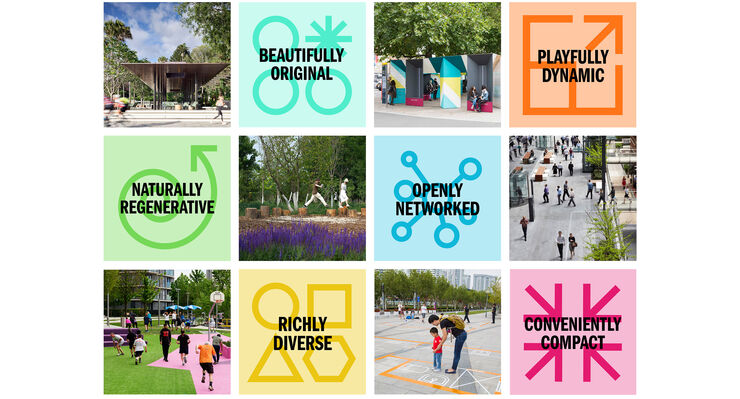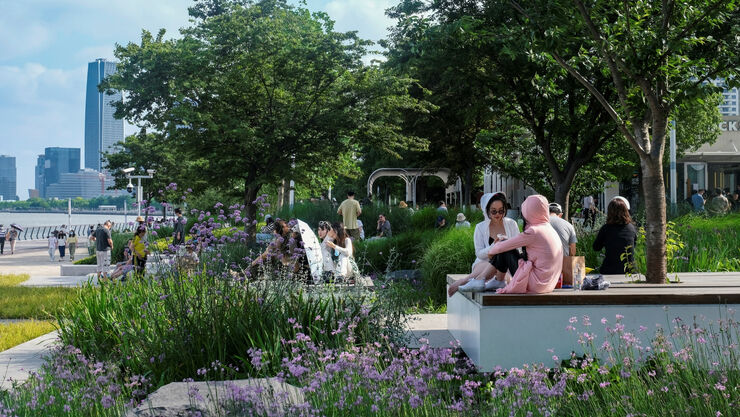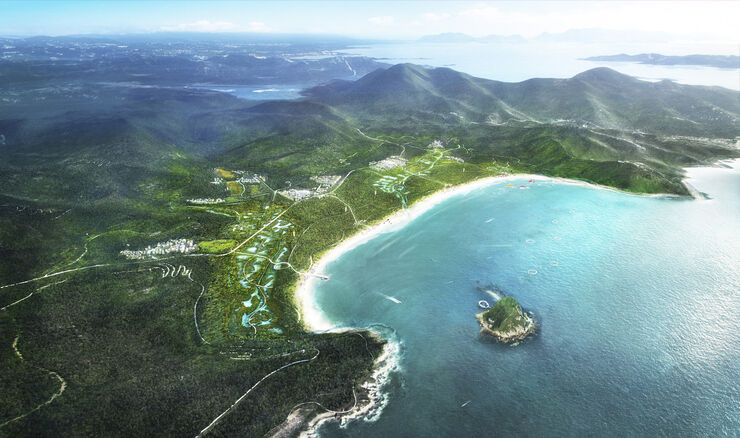Transforming forgotten waterfronts into vibrant public spaces

How do you transform a forgotten urban waterfront into a thriving destination that helps cities become more resilient to climate change? We explore six characteristics driving successful waterfront developments.
By Yuru Ding, Researcher
As people increasingly seek meaningful connections with nature within their urban environments, waterfronts are emerging as some of the most popular destinations in cities. Contributing to environmental, social and governance (ESG) megatrends, the development of urban waterfronts can be a powerful tool for addressing environmental challenges, promoting social wellbeing and fostering responsible governance practices.
By drawing insights from thriving urban waterfronts around the world, we’ve identified six key characteristics that contribute to their success. This exploration aims to define the essential qualities that make waterfronts vibrant hubs for socialising, economic activity and urban resilience, utilising our Six Qualities of Great Urban Places framework.
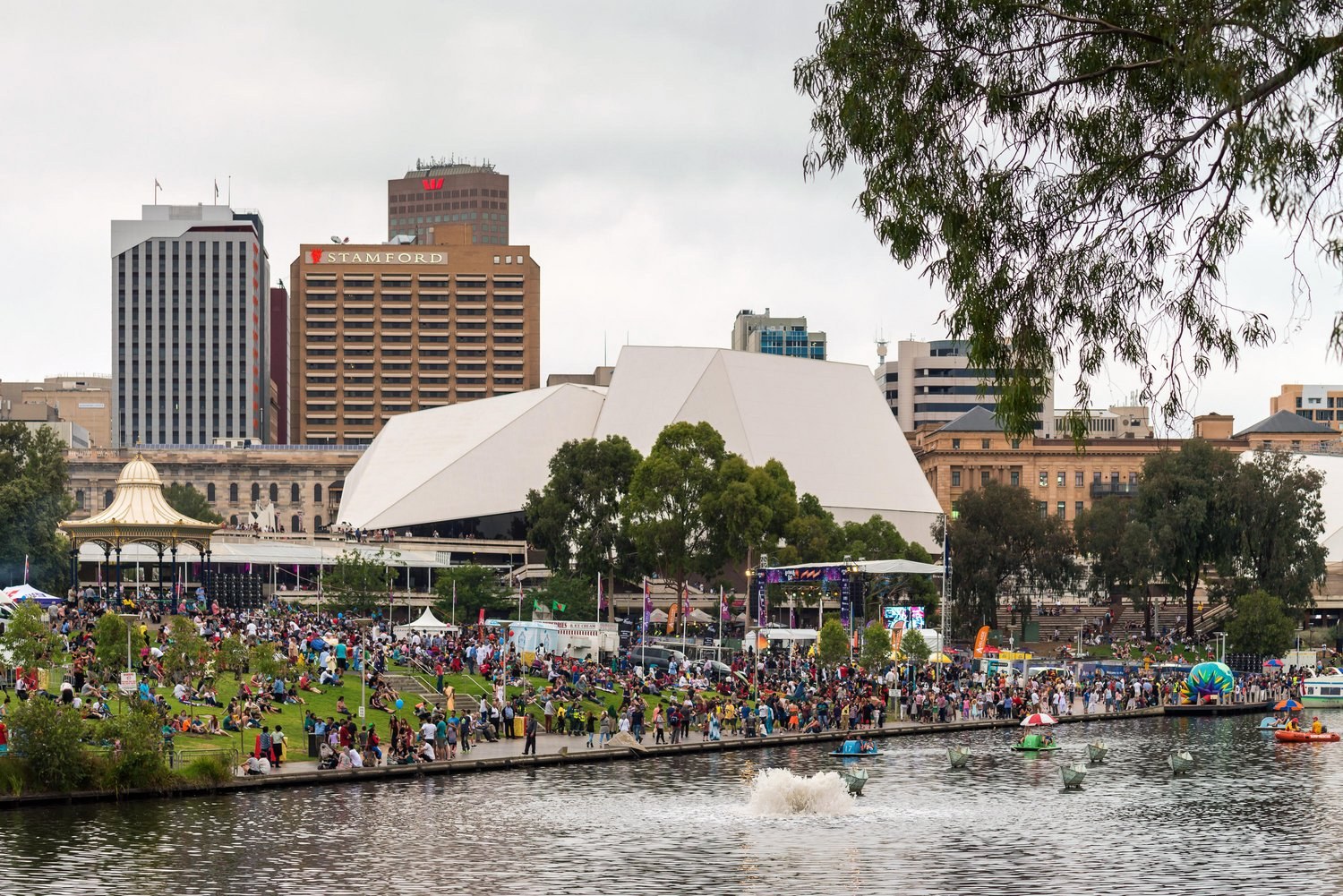
Beautifully original
Historic waterfronts are often at risk of becoming completely integrated into their contemporary surroundings. To bypass this, it’s important that contemporary connections that celebrate the site’s rich history are created.
Culturally impactful waterfront development involves three primary characteristics:
- Repurposing historical assets for public service
- Reforging industrial identity
- Reviving original ecology
Our design for Shanghai’s renowned West Bund waterfront exemplifies these three characteristics, creating a place that embodies the concept of being beautifully original.
WEST BUND, SHANGHAI, CHINA
Where once smoke choked the air, Shanghai’s 11.4 km-long West Bund is now a vibrant hub of art and leisure that weaves history into the present, creating a beautifully original waterfront. A former industrial area along the Huangpu River and the site of the 2010 World Expo, West Bund has undergone a decade-long metamorphosis that has seen nearly 500,000 sqm converted into public riverside playgrounds and 100,000 sqm turned into riverside terraces reviving original ecology.
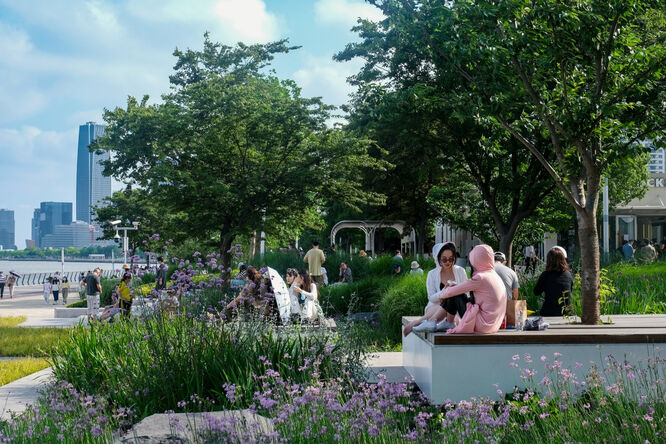
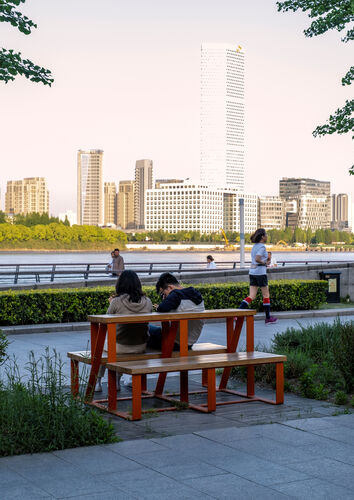
Gone are the factories, replaced with grassy picnic spots, cycling and running trails, cafes, a skate ramp, seating and pop-up event spaces.
Colossal oil tanks from the 1930s, built for the former Longhua Airport, have been transformed into TANK, a contemporary art centre bursting with galleries and big-name exhibitions. Over 20 global art powerhouses such as the Long Museum and Yuz Museum now call this revitalised district home – a testimony to the area’s continually evolving identity and adaptability.
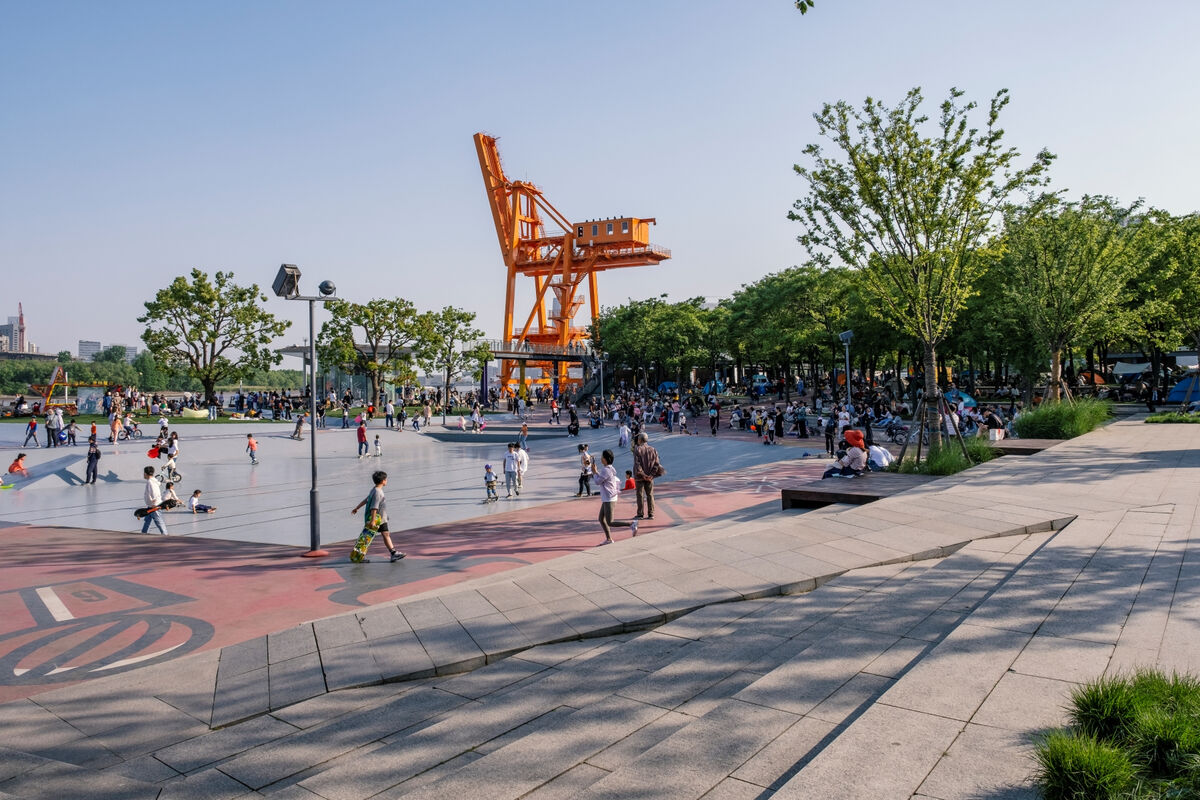
Conveniently compact
Three key components of quality living are easy access to essential services, diverse opportunities and public spaces. Urban waterfronts that are walkable foster vibrant social connections and guarantee readily accessible amenities, placing everyday needs within a short and effortless commute.
Three characteristics of conveniently compact urban waterfronts:
- Enhanced walkability to essential services, prioritising human needs
- Increased public access to densely populated functions within a given space
- Public spaces crafted as multi-layered destinations that seamlessly integrate shopping, socialising and sustainability
The K11 development in Hong Kong shines as a stellar illustration of a compact waterfront destination, seamlessly blending walkability with an array of public spaces and access to a diverse range of amenities.
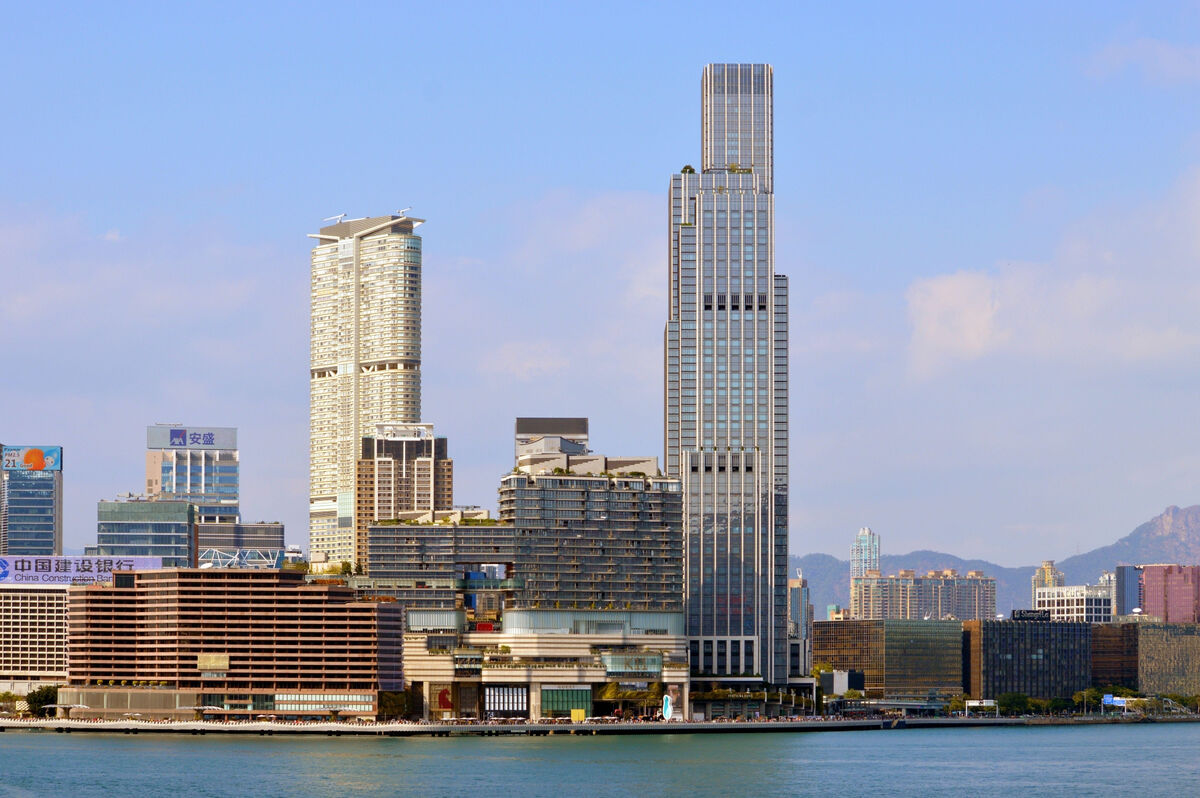
K11 MUSEA, VICTORIA DOCKSIDE, HONG KONG, CHINA
Situated on the 40,000 sqm Victoria Dockside, K11 is a harmonious mix of premium art, hospitality, workplace and retail offerings.
A 62-storey vertical ‘creative city’ tower called K11 Atelier sits at the heart of the development on the restored waterfront promenade, enabling efficiency, spontaneity and connection. It houses the 413-room Rosewood Hotel and premium office, coworking and event spaces. Next to K11 Atelier is K11 Musea, a 10-floor cultural-retail landmark buzzing with art, fashion and design, while K11 Artus offers 287 five-star apartments.
Victoria Dockside is a stone’s throw from the dense, thriving neighbourhood of Tsim Sha Tsui, making the entire neighbourhood a highly walkable, conveniently compact and connected area that visitors and city dwellers love to visit and spend time in. Victoria Dockside is also a champion of green spaces. An impressive 30 per cent of the K11 area features lush green terraces.
Richly diverse
If urban waterfronts are to be socially equitable spaces accessible to all, they need to have diverse uses, not single functions. Integrating housing, businesses and accessible public spaces alongside engaging public programmes fosters inclusivity and attracts individuals from various demographics, ensuring waterfronts serve as welcoming and dynamic destinations.
Inclusive, richly diverse waterfront planning should include:
- The involvement of a wide variety of organisations and agencies to fund, operate and exercise leadership
- A high mix of land use
- The implementation of a broad range of public programmes
Our design for Darling Harbour in Sydney, Australia stands as an exemplar of a richly diverse waterfront.
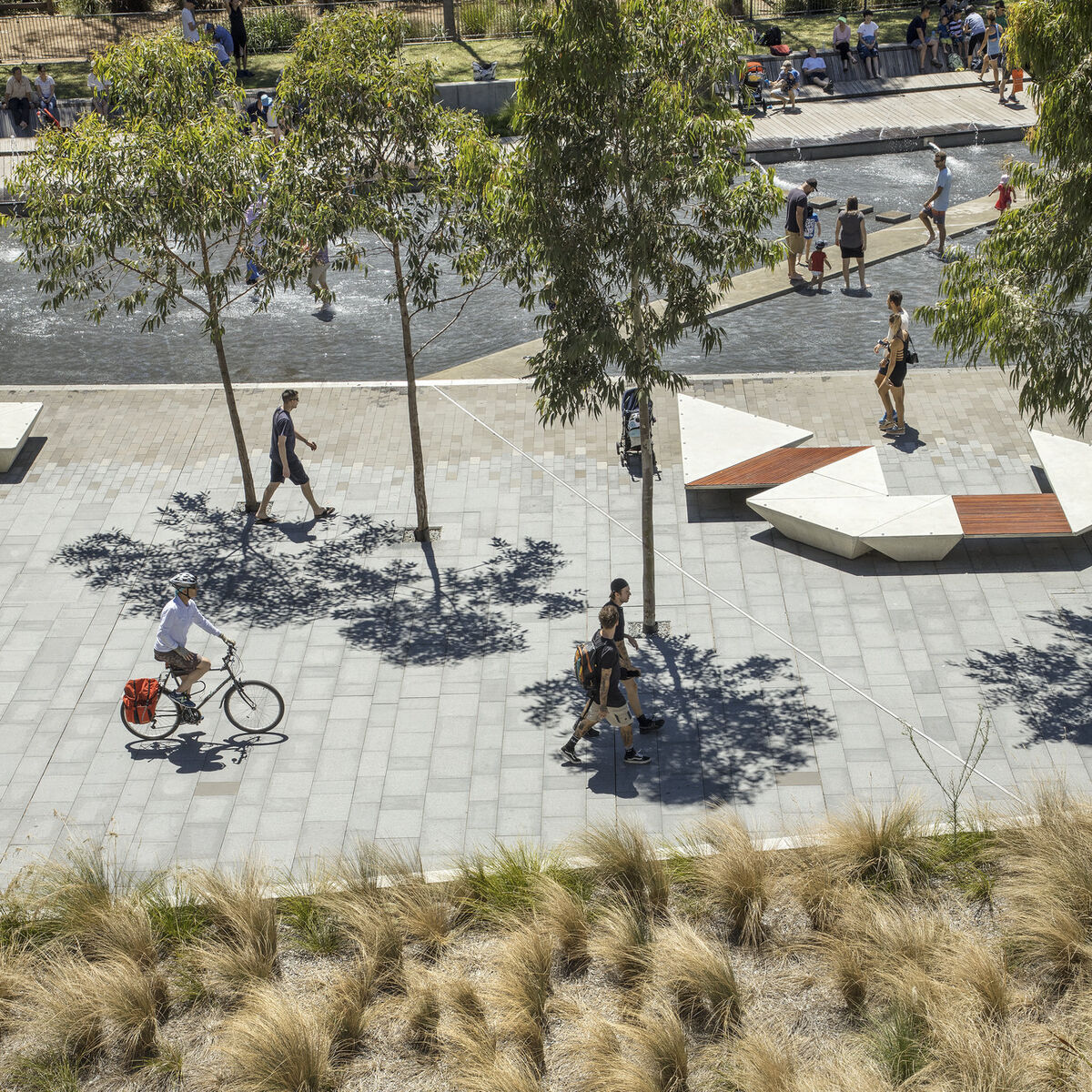
DARLING HARBOUR, SYDNEY, AUSTRALIA
Sydney’s innovative approach to re-lifing the Darling Harbour precinct isn’t just a win for hosting major events, it’s a prime example of the public and private sectors successfully co-creating. Spearheaded by Lendlease and overseen by the NSW Government, Darling Harbour’s redevelopment since 2013 has involved a diverse consortium of property developers.
Hassell was commissioned to transform Darling Harbour’s 20-ha public realm. We achieved a notable 30 per cent expansion of open space, seamlessly integrating all three International Convention Centre (ICC) Sydney buildings - the theatre, convention and exhibition centres.
The precinct also incorporates numerous entertainment and leisure venues, like Sydney Aquarium, and serves as a regular host for educational programmes and seasonal festivities that draw in people from all walks of life, both locals and visitors.
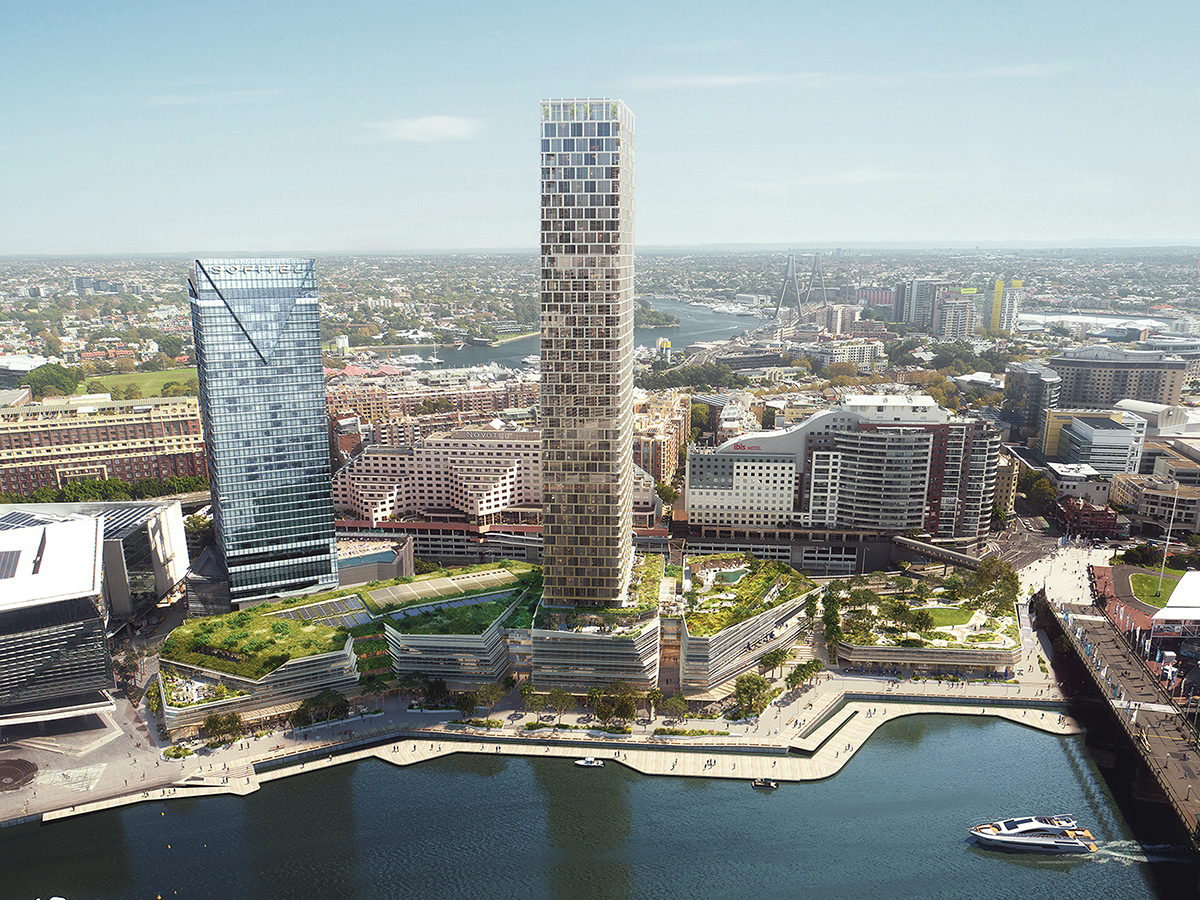
The next phase of the waterfront’s transformation is currently underway – the redevelopment of the Harbourside Shopping Centre into an even more multi-faceted precinct featuring retail, residential, commercial and entertainment components. Slated for completion by 2026, the NSW Government partnered with property group Mirvac for the project, joining forces to ensure Darling Harbour’s relevance for the coming decades.
The precinct hums with cultural energy, and this strategic blend of art and activity is a year-round invitation to the community to experience a thriving hub.
Openly networked
Transforming forgotten waterfronts into vibrant public spaces starts with a simple question: how can people easily get to them, and what amenities are needed to enjoy them?
Accessibility isn’t just about roads and bridges. It encompasses connections to ecology, shared economic resources and communities. Openly networked waterfronts not only provide travel infrastructure and public amenities but also offer funding networks, bustling venues, and, notably, ecological assets that people may have previously overlooked and now await rediscovery.
To democratise accessibility, these three ingredients are essential to creating highly ‘networked’ waterfronts:
- Pedestrian-friendly links to high-frequency city networks, including public transport
- Collaborative alliances to effectively blend funding and revenue streams to create financial sustainability
- Improved urban connectivity to local ecological resources to enhance the overall quality and resilience of ecosystems
The Chicago Riverwalk in the US eloquently spans all three of these openly networked characteristics.

CHICAGO RIVERWALK, CHICAGO, US
The Chicago Riverwalk’s innovative pedestrian network, strategically positioned near two bustling metro stations, has become a vital artery for commuters.
Imagine hopping off a train and gliding by the Chicago River on a scooter or strolling alongside fellow travellers on foot. Over 42 per cent of the Riverwalk’s visitors do just that, proving its power to connect people through diverse transit modes.
Created via 90 per cent public funding, the project’s collaborative funding alliances ensure its financial sustainability. Between 2013 and 2018, it generated US$16 million, surpassing loan repayment goals by 29 per cent thanks to partnerships via the Riverwalk Concessions, which provides diverse revenue streams from riverbank vendors.
The Riverwalk’s commitment to ecology is reflected in a Floristic Quality Index (FQI), which scores plant diversity and ecological health of 38.2 in an area of nearly 1,800 sqm, indicating a thriving natural environment.
Playfully dynamic
Waterfronts are, by nature, dynamic spaces that change over time and should be designed to be agile and adaptable. Designing for the ebb and flow of nature not only protects built structures but the safety, comfort and joy of the people who experience them.
Aside from being naturally dynamic, waterfronts also need to be socially dynamic.
Public engagement is essential to foster a sense of ownership over public spaces and inspire creative ways to experiment with rebuilding and shaping them, making them playful, engaging and loved places.
Three characteristics of dynamic waterfronts:
- Interactive experiences that weave cultural connections and foster a sense of community
- Adaptable programming and design that keeps pace with evolving trends and interests
- Sustainable and playful design elements that encourage exploration of the waterfront’s ecosystem, history and culture
Riverside Green is a beloved destination for Brisbane locals, showcasing a lively and dynamic waterfront experience.
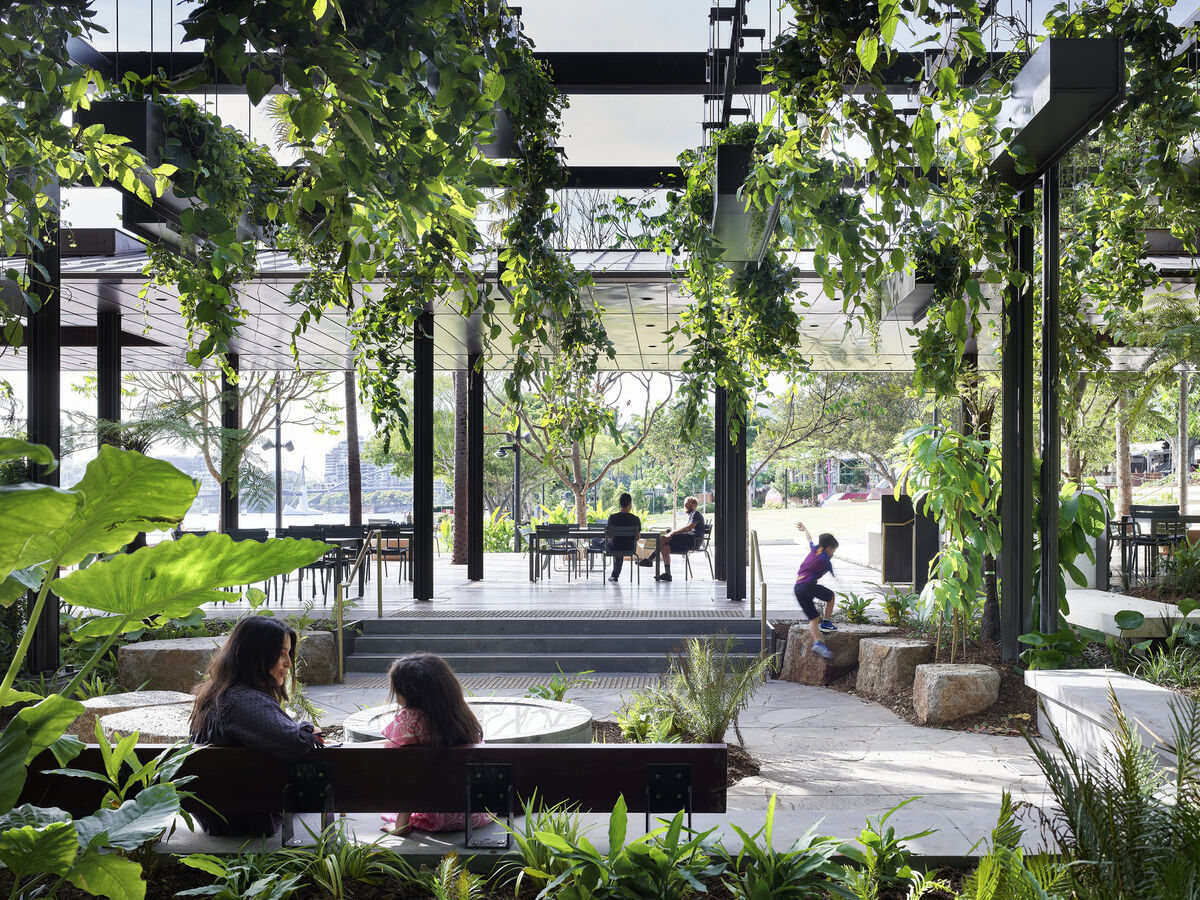
RIVERSIDE GREEN, BRISBANE, AUSTRALIA
After the 2011 flooding that damaged the Brisbane River’s waterfront restaurants, Riverside Green emerged as a popular, fresh green heart. With adaptable features, including movable furniture, the revitalised landscape caters to diverse social themes, transforming into a lively venue for events and everyday activities along its banks.
Beneath a rainforest pavilion, Riverside Green bursts into playful life. Designed for Brisbane’s subtropical climate, the flexible shelter can adapt from everyday use for socialising, games or tranquil meditation into a dining room or stage.
Ngugi artist Elisa Jane Carmichael’s evocative sculpture, Water is Life, which graces the space, is a tribute to the First Nations’ deep connection to this life-giving element.

Naturally regenerative
Regenerative systems are where urban life and nature co-exist in seasonal cycles, sustained by self-sufficiency, reliable financing and wellbeing.
Striving for long-term urban desirability, this approach seeks to minimise environmental harm from urban growth while actively restoring existing damage, fostering a more adaptable future. Cities that actively neutralise their footprint embrace regenerative practices.
Three characteristics that contribute to the regenerative nature of urban waterfronts:
- Actively regenerate and enhance urban amenities to foster vibrant community life in the long term
- Maintain a predictable and moderate financial outlook for long-term development viability
- Reinstate self-sustained ecological wellness within the urban environment system
We incorporate these traits into our recovery plan for China’s Xichong Coast to establish a world-class model of a naturally regenerative ecosystem.
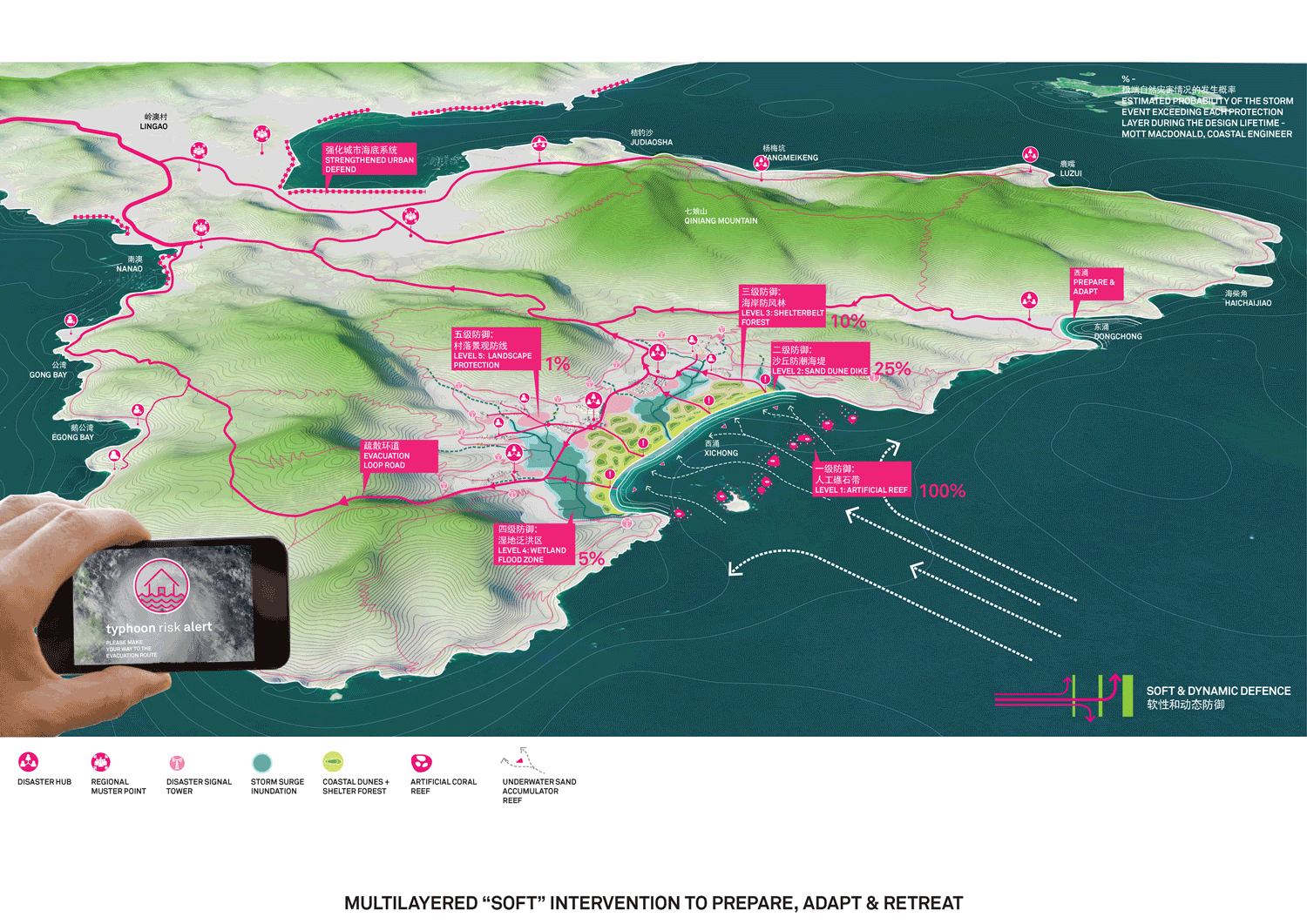
XICHONG COAST RECOVERY PLAN, SHENZHEN, CHINA
Xichong is one of China’s most beautiful coasts, with sandy beaches and a biodiverse tropical landscape. But it’s also part of Shenzhen, the tech megacity whose rapid development has degraded Xichong’s pristine environment along the South China Sea. Typhoon Mangkhut – one of the largest typhoons to hit Southern China – also destroyed vast areas of this coastal landscape.
Out of that adversity came an opportunity for a more sustainable future. Efforts for long-term resilience and ecological stability are demonstrated through a recovery plan, which establishes mountain-coast corridors, habitat restoration and artificial reefs.
Building a thriving Xichong demands two-pronged action: tapping external funding for robust economic development while empowering residents through local tourism management. Strategic planning plays a crucial role, including relocating new communities away from sensitive tourism areas and efficiently involving locals in landscape management. This approach aims to strengthen the connection between people and the area’s natural assets.
Urban waterfronts are areas rich in memory and economic history. Reinventing them requires visionary partners and catalysts such as bold public infrastructure projects, culturally significant regeneration initiatives and environmental restoration efforts. By honouring their heritage and embracing evolving needs, we can transform waterfronts into beloved destinations fostering vibrant, resilient and meaningful urban life for generations to come.

Scan this QR code with your phone to follow Hassell on WeChat.
